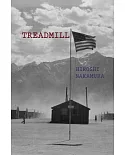This historical novel, Encounter (Mannam), by Hahn Moo-Sook, one of Asia's most honored writers, is a story of the resilience in the Korean spirit. It is told through the
experiences of Tasan, a high-ranking official and foremost Neo-Confucian scholar at the beginning of the nineteenth century. Because of Tasan's fascination with Western learning, then
synonymous with Catholicism, he is exiled to a remote province for 18 years. In banishment he meets people from various social and religious backgrounds--Buddhist monks, peasants, shamans--whom
he would not otherwise have met. The events of Tasan's life are effectively used to depict the confluence of Buddhist, Neo-Confucian, Taoist, and shamanistic beliefs in traditional Korea.
A subplot involves three young sisters, the daughters of a prominent Catholic aristocrat, and affords the reader vivid glimpses into Yi-dynasty women's lives, particularly those of palace
ladies, scholars' wives, tavern keepers, shamans, and slaves. In contrast to the long-held Confucian stereotype of female subservience, this story illustrates the richness of women's
contribution to Korean culture and tradition.
Encounter's detailed narrative provides a broad and informed view of nineteenth-century Korea, making it a highly useful book for courses on Korean literature and society. It will also
be an engaging read for lovers of historical fiction. This historical novel, Encounter (Mannam), by Hahn Moo-Sook, one of Asia's most honored writers, is a story of the resilience
in the Korean spirit. It is told through the experiences of Tasan, a high-ranking official and foremost Neo-Confucian scholar at the beginning of the nineteenth century. Because of Tasan's
fascination with Western learning, then synonymous with Catholicism, he is exiled to a remote province for 18 years. In banishment he meets people from various social and religious
backgrounds--Buddhist monks, peasants, shamans--whom he would not otherwise have met. The events of Tasan's life are effectively used to depict the confluence of Buddhist, Neo-Confucian,
Taoist, and shamanistic beliefs in traditional Korea.
A subplot involves three young sisters, the daughters of a prominent Catholic aristocrat, and affords the reader vivid glimpses into Yi-dynasty women's lives, particularly those of palace
ladies, scholars' wives, tavern keepers, shamans, and slaves. In contrast to the long-held Confucian stereotype of female subservience, this story illustrates the richness of women's
contribution to Korean culture and tradition.
Encounter's detailed narrative provides a broad and informed view of nineteenth-century Korea, making it a highly useful book for courses on Korean literature and society. It will also
be an engaging read for lovers of historical fiction.





















